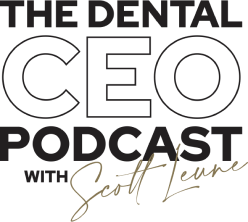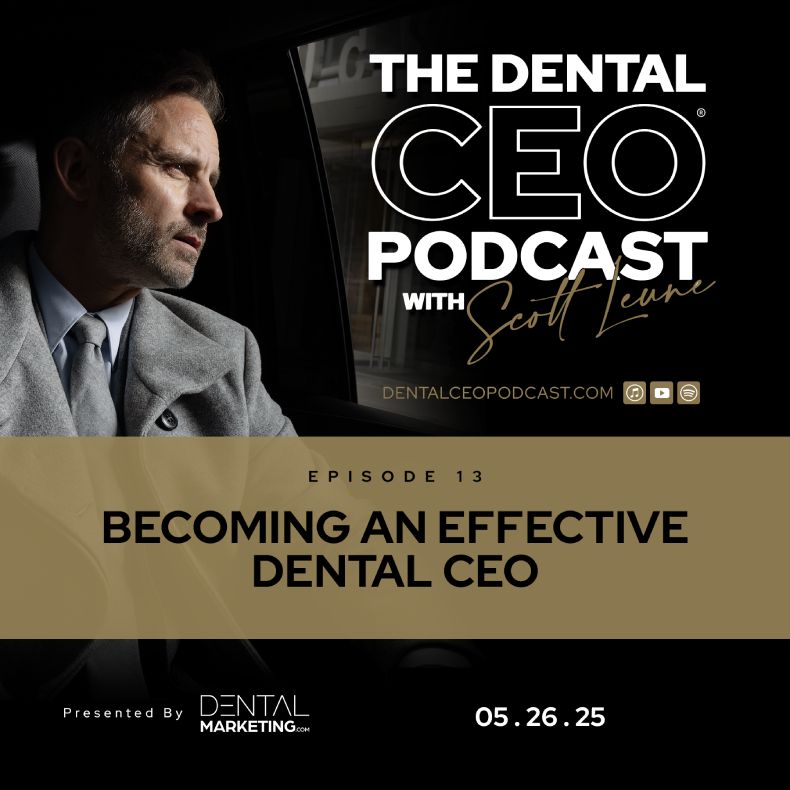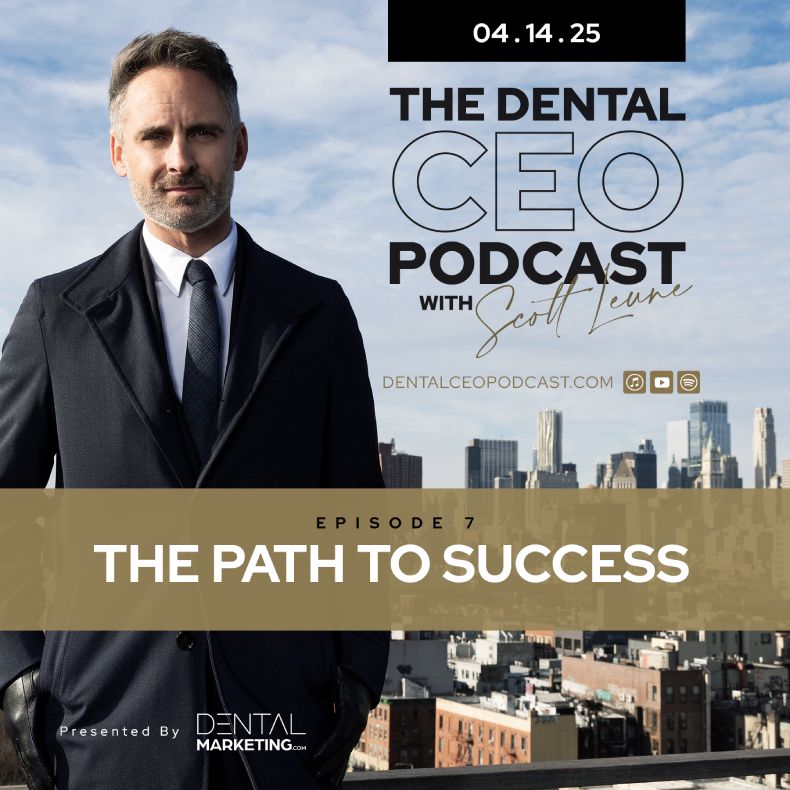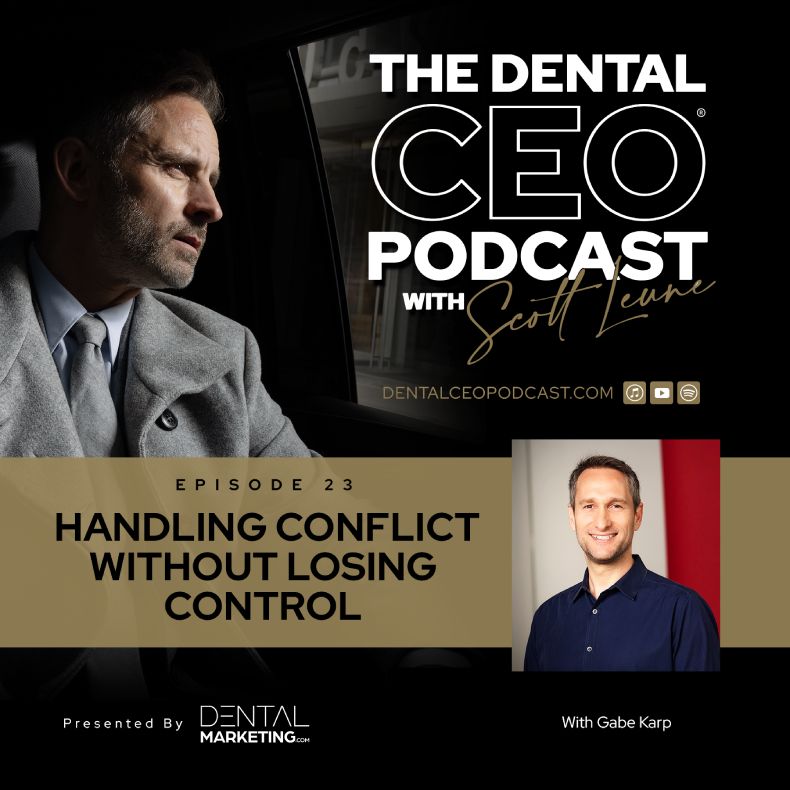Dental CEO Podcast #19 – Retaining Great People
In this episode of the Dental CEO Podcast, host Scott shares the innovative strategy of profits interest, a powerful tool for retaining top talent in your dental practice. Discover how this financial incentive, often known as phantom stock or profit sharing, can align your team’s goals with the success of your business. Learn the ins and outs of setting up a profits interest pool, the benefits of vesting schedules, and how to ensure your key employees feel valued without relinquishing control of your company. Whether you’re looking to keep your star associate or incentivize your office manager, this episode provides actionable insights to help you build a loyal and motivated team.
Highlights
- The Challenge of Retaining Key Team Members – A discussion on the common issue of losing valuable associates and office managers in dental practices.
- Introduction to Profits Interest – The concept of profits interest is introduced as a financial incentive to retain key team members.
- Mechanics of Profits Interest – Detailed explanation of how profits interest is structured, including the creation of a pool, vesting schedules, and the impact on company ownership.
- Benefits and Implementation of Profits Interest – Benefits include aligning interests with company profitability and providing long-term incentives.
Speakers

Dr. Scott Leune
Scott Leune, known as The Dental CEO, is one of the most respected voices in dental practice management. From his seminar room alone, he has helped launch over 2,000 dental startups and supported more than 20,000 dentists across practices worldwide. Named one of the 30 Most Influential People in Dentistry, Leune delivers practical, no-fluff strategies that empower dentists to lead with confidence, scale efficiently, and achieve real personal and financial success.
Watch Episode
Read Full Transcript
Scott Leune: This podcast is sponsored by dentalmarketing.com and they have agreed to give the listeners of this podcast a free competitive marketing analysis. This analysis is going to show you very clearly how your practice is doing compared to your competitors. It's going to give you the health of your SEO, it's going to give you a website grade, and you'll also see what your competitors are up to. This helps you know what ad strategy you should have today, how clean and effective is your marketing right now Find out by getting this free and detailed analysis, text the word marketing to 4 8 6, 5 9 and you'll receive this competitive analysis from our sponsor dentalmarketing.com. So wouldn't it be nice if we never lost that amazing associate we have working for us? Or wouldn't it be nice if we had some way to kind of connect the key team members of our organization to our long-term success, our long-term profit? Wouldn't it be nice if we could just retain great people and share our success with them in a way that just made sense? That's exactly what I'm going to be teaching you here on this episode of the Dental CEO podcast.
So we got to dive into this one because man, it is difficult when we have this associate dentist and they're doing great and suddenly they quit. They go to someone else, they buy a practice or they start a practice, or we've got this office manager that we just love and we thought they would be with us for a long time, but they quit. Or they keep asking us for more and more and more money and it just doesn't feel stable. Our key people, they're not sowed into our organization strong enough to where we feel like they're just going to be here forever. We can solve that and we can solve that with a financial incentive that I want to teach. And I've done this myself and my companies. It has been very beneficial, not just for me, the owner of the company, but especially for some of the key people I've had in my organization. And this incentive is called profits, interests, profits, interests. That is the official term for it by the IRS profits interests, or you might know this layman's terms as phantom stock or as profit sharing, but it's called profits interest. So this is going to take a bunch of layers for me to explain this to you, and I'm sure even if you were familiar with profits interest, you are going to maybe see 'em in a different light once I'm done teaching about how I've used them. Alright, so profits, interest, this is like owning stock in a company except you have no control or decision making. So if my associate dentist has profits interest, it's like they have stock in the company, phantom stock, but they don't have any decision making power. Now this isn't actual stock, it's called profits interest. It's a different kind of classification, but what it gives 'em rights to is a portion of the profits.
So we are going to share a portion of the company profits based on how much of this kind of phantom stock they have. So if for example, someone has 10% of phantom stock in the company, then every time I distribute money they would get 10% of the distributions theoretically. Now they don't control, they don't make any decisions, they didn't have to buy this stock and I don't have to buy it off of them when they leave. So this is merely sharing profits with someone while they're in the company. When we have profits, according to all of my decisions, the business owner. Now lemme go a little deeper, another layer to this. What we do is we kind of define a size of the pool that's going to hold the phantom stock or the profits interest. So we might say something like, never will the pool be more than 20% of my company.
So I've got this bucket that represents 20% of my company's profitability. Basically 20% of my company, whether I have one person in that pool or a hundred people in that pool, the pool is never bigger than 20% of my company. So what that does is as I add people to profits, interests, I don't have to give away more and more and more and more of my company. It will always be that 20%. So that's one important thing to note. Here's another thing to note, and I mentioned it a little bit earlier, but if you have profits, interests in my company or phantom stock and you leave for any reason, you could have quit, you could have been fired. Any reason you leave, you lose all the profits interest, you don't get bought out, none of that, you don't get a pay off, they're gone. So that is going to be one thing to encourage people not to leave.
They're getting a good normal salary as they would anywhere else, but in our company they also now have profits, interests that they stand to lose if they ever leave. Another thing about these profits interest is you can do what's called vesting. Vesting. That means people are going to earn a little bit of it over time. So let's say I put someone in with profits interest and I gave them a five year vesting schedule. That means that their 20% is going to be vested over five years. It's going to be split up over five years. So after year one, they'd one fifth of the 20% they get 4%. Year two they'd get another 4%. So now they're up to eight. Year three, they get another 4%. And so this encourages 'em to stick around and see out the five years so they could be fully vested in these profits interests.
That is another reason why those people will typically stay longer. Now, a benefit for them is that they don't have to buy these profits interest. They don't have to buy in as a partner. They don't have to get debt or come up with a bunch of money to buy in. We are going to be giving them these profits interests because they represent the category for us of the most important people in our organization. So they're not having to buy 'em, they're not having to get a loan for 'em or anything like that. So we are putting 'em into this pool because they are the most important people. And again, this is a fixed pool. Well, what if I've got one person in the pool already and I add another person? Okay, well then that second person dilutes the first. So before there was one person vesting for the entire 20% pool, but then I add a second person and now that second person is going to be vesting for that same 20% pool so they dilute each other.
It doesn't mean one person's losing because the pool is 20% of our practice. And as I add more people, our practice is getting bigger. So when we only had one associate, we had the associate myself, maybe the owner dentist, we had a two dentist practice. Now we've got a three dentist practice or four dentist practice or five dentist practice. The amount of profit is going up and up and up and up. And so therefore that first dentist isn't shrinking in their distributions. They're getting diluted, but the organization's also expanding. And so that's important to understand. You can add as many people as you want as you grow to that pool. And again, it's never eating away at more than that limit that you set on that pool, 20% in this example. So those are kind of the attributes of a profits interest pool. Well, actually one more thing I want to say.
You can limit profits interest to just the distributions or you could also legally set up a situation where they would get a payout if you ever sold the company as well. So you could have both or just one depending on what your goals are. In my past companies for example, I had it set up to where they would get a portion of the sale as well. And so when I sold companies, they all got a check and some of them got a really big sizable check, a significant check. So you could set that up as well. They could either get just the profits or just the sale or they can get both. So let's put this now in an example. Let's say I've got an associate dentist and man, they're really good. They're really good. They're better than average. If I ever lost 'em, I don't know if I could replace them.
Not to that level. They produce enough that I don't know if I could find someone to produce that much. They're good enough to work with that I want them. They fall in that category of great to work with and they produce well. That's a person I definitely don't want to lose. The minute I lose them, I'm going to shrink as a company. So I might as well give them a piece of the company because if they leave, I'll lose that piece anyway. You see what I'm saying? So I might as well give them the extra piece of the company that they bring by being so good. So for that person I might say, okay, you are definitely a great fit for our practice. I am going to give you profits interest, and over the next five years you have the ability to earn up to the entire size of the profits interest pool, which represents I'm just making something up 20% of my company or 20% of this particular location.
And so now they're on this kind of five year path of not just owning their regular pay, but they're also going to be getting more and more and more of the profits. In year one, they're getting 4% of the profits and I'm getting 96% in year two, they're getting 8%, I'm getting 92 and so forth. And so they're getting more and more of the profits. And at the end of five years, assuming they're the only person in that pool, they would get 20% of the profits. And so man, it's like they're an owner except they didn't have to buy in. They don't have any control decision-making control. They only have whatever control I give them, but they can't out vote me. There's no vote. I have all the votes. Let's say I add another associate and they're not all that great. I may not put them in profits interest.
And then I had another associate. I had another associate. We keep growing and I might decide, you know what? I want all associates to have the ability to be in profits, interest because I just want longevity of my dentist. So now I've shifted from I only want to give the best dentist profits interest to, you know what I think I want to give all dentists, profits, interest dentists, they're the most important people in my organization. And by the way, not only do I want to give dentists maybe every single office manager or a regional manager, I'll also put in that pool and suddenly I could have different types of pools. I could have a pool for just one practice or I might put a pool at the holding company level. But what I'm doing is I'm finding a way to kind of bonus everyone extra money, but only when there's profit and I'm giving them a vesting schedule so that they will stay longer.
Yet I still make all the decisions. I control everything. So this is a very smart kind of strategy in lieu of raising everyone's pay because when you raise their pay, you have to pay more. Whether your business is making more money or not, I want them to make more money, but only when there's profit to afford it. So this aligns 'em with profit, it gives 'em a vesting schedule, it gives 'em something to lose if they were to ever leave. Yet I haven't sold or lost control of my company. This can be a very big program in a big organization or it can be very tiny, just you and that one important person. But either way, this is a really cool tool to use to get longevity of employment, to get alignment of profits, and to really compensate your people more when you can afford it and not when you can't afford it.
And that is profits interest. The last company I had profits, interests, and I had a approximately 25 people in the pool and we were making distributions every quarter. So if I distributed a hundred dollars, $20 was split up between the 25 people. So make that real numbers. If I distributed hundreds of thousands of dollars a quarter, then those hundreds of thousands were split between 25 people pro rata based on how many profits interests they had. And this was a little more complex. Profits, interest pool. I would issue larger profits, interests to certain types of people and smaller profits, interests to other positions. They were all in the pool. And that's a big amount of money to then share. And that's when you financially incentivize people to stay for life in a way. I mean, I guess I'm being extreme when I say life, but you know what I mean.
That creates the really long-term financial incentive. Of course, if I really want them to stay for a long time, I better treat them really well from a personal standpoint, from a leadership standpoint, of course, I better have a way for them to grow and excel and climb in their career and feel like they're motivated and feel like they're benefiting from this journey. It's not just about money, but if we don't have the money part, gosh, we lose people. So this might be the solution on the money side, the money side. Let's not constantly be hit with all these requests to pay people more money. Let's say no to that. Let's pay people very fairly and if they're key to our organization, let's put 'em on a long-term vesting schedule, profits, interest, where they get to be treated financially like a partner of ours, and hopefully that solves the money equation.
Hopefully they will stay a lot longer and be really aligned with us to do the right thing for the health of our business. That's profits, interests. I hope this was informative to you. I hope you got something out of this. Please stay tuned for the Future podcast episodes. Every week we release another one on all kinds of different topics. Subscribe. Please subscribe if you haven't, leave an online review for us. If you haven't. We are trying to launch this thing and do something really cool in dentistry and we would appreciate your help. Until next time, this is Scott Leune with the Dental CEO Podcast.
SUBSCRIBE TODAY
Subscribe now and receive a 25% discount code for Scott Leune’s upcoming events. Plus, get podcast episode alerts and exclusive subscriber perks.




